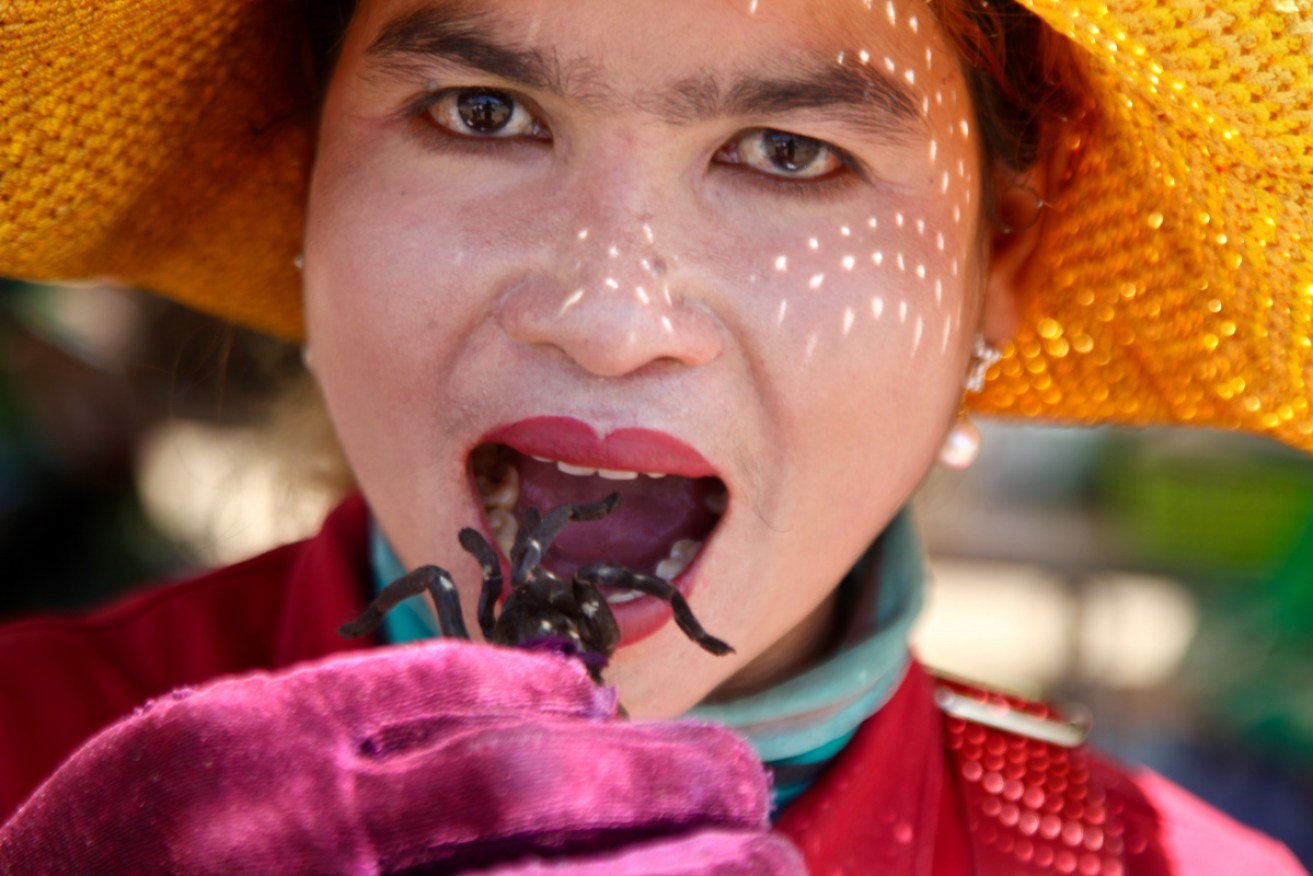The town that eats spiders


A hawker in Skuon samples the local delicacy. Photo: Ian Lloyd Neubauer
About 90 minutes’ drive north of Cambodia’s capital, Phnom Penh, is Skuon, a market town on National Highway 6 – the road to the world-famous Angkor Wat temple complex.
Drivers who stop at the central junction to stretch their legs are approached by the usual hawkers with baskets laden with snacks.
But instead of selling chips, fruits or nuts, the hawkers of Skuon sell deep-fried insects: water beetles, crickets and zebra tarantulas the size of your palm – the latter being a regional specialty.
The eight-legged snacks have become so popular in recent years that they’ve turned Skuon into a foodie destination known as “Spiderville” in the Cambodian language.
“In Switzerland, where I come from, you can buy compressed larvae burgers in the supermarket,” backpacker Nicola Riatsch says. “When our tour guide in Phnom Penh told me they have a place where they cook spiders, I wanted to come and try some.”

Snacks for all the family. Photo: Ian Lloyd Neubauer
Tarantulas have been used for centuries in traditional medicine to cure backache and breathing disorders, and are thought to have aphrodisiac properties.
But no one knows for certain when – or why – the people of Skuon started deep-frying tarantulas. It’s believed the change might have come out of necessity, when the ruthless Pol Pot regime caused widespread famine in Cambodia in the 1970s.
What began as a “peasant food” has matured into a delicacy with a celebrity following (In 2011, Gordon Ramsay cooked and ate zebra tarantulas on his TV show Gordon’s Great Escape) – and price to match.
“I like spiders but I can’t eat them every day because they are expensive for Cambodian people,” says Pok Sambath, a shop assistant in Skuon.
“About 10 years ago a spider cost about 500 riel (16 cents) but now they cost 2500 riel (83 cents). That is what I earn in an hour.”

Meeting the locals – with two legs and eight – in Skuon. Photo: Ian Lloyd Neubauer
Finger-licking bad
Despite their size and formidable appearance, tarantulas can be trapped relatively easily. They’re nocturnal and can be removed from a burrow during the day by a child wearing a pair of gloves.
The poison of a zebra tarantula isn’t fatal to humans, but getting bitten by one can be painful, so their fangs are removed before they’re brought to market.
The hawkers cook the spiders on the street. First, they boil them. Then they dust them in a batter made of sugar, salt, crushed garlic, MSG and a pinch of rice flour. Finally, the spiders are fried in vegetable or peanut oil.
The legs have little meat on them and taste crunchy, salty and sweet – not unlike flavoured popcorn. The head tastes much the same.
But the large abdomen that holds the “white meat” – a mixture of organs, spider poo and possibly eggs – is a lot harder to keep down.
Ramsay said it had “a sort of bitter, bile, sour taste” – and spat it out, on camera. I’d describe it as a mix between chicken and a really pungent fish like pickled herring. But I also spat it out.
“It’s not so tasty,” says Riatsch from Switzerland. “But at least I can say I tried it.”








